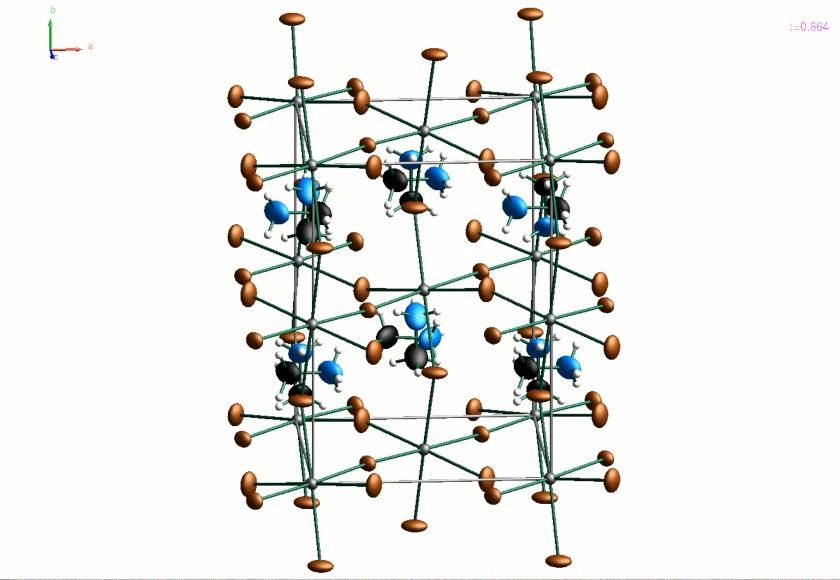New insights into the structure of organic-inorganic hybrid perovskites
Team at HZB has analysed structural data of photovoltaic materials with a novel model
In photovoltaics, organic-inorganic hybrid perovskites have made a rapid career. But many questions about the crystalline structure of this surprisingly complex class of materials remain unanswered. Now, a team at HZB has used four-dimensional modelling to interpret structural data of methylammonium lead bromide (MAPbBr3), identifying incommensurable superstructures and modulations of the predominant structure. The study is published in the ACS Journal of Physical Chemistry Letters and was selected by the editors as an Editor's Choice.
Organic-inorganic hybrid perovskites have been intensively investigated for use in solar cells for about ten years. Thin films of such perovskites are inexpensive and already achieve high efficiencies. In addition, they can be perfectly combined with common solar cell materials such as silicon to form tandem cells. At the beginning of 2020, an HZB team was able to achieve a world record efficiency of 29.15 % with a tandem cell made of perovskite and silicon.
But despite the most intensive research, it has not yet been possible to precisely elucidate the crystal structures with their diverse modulations and superstructures as a function of temperature, even for the best-known perovskite compounds such as methylammonium and formamidinium lead halide.
Now, a team at HZB has analysed structural data of methylammonium lead bromide (MAPbBr3) with a novel model. Postdoc Dr. Dennis Wiedemann used a model that takes a fourth dimension into account in addition to the three spatial dimensions. The structural data were measured at a temperature of 150 Kelvin at the University of Columbia.
"The problem in these hybrid perovskites is the fact that the different modifications do not differ significantly in energy, so that even small temperature differences are sufficient to trigger phase transitions," explains Dr. Joachim Breternitz, co-author of the study. The data on the crystal structure therefore show an average value over many elementary cells, so that modulations and superstructures are not always recognisable. The new model explains the incommensurable superstructures observed in MAPbBr3 in a small temperature window around 150 K, which do not have the same periodicity as the crystal lattice. This complex structure comes from tilts and shifts in the crystal structure. "The new model will also provide more detailed insights into the modulated structures of other perovskite compounds," says Breternitz.
Publication
J. Phys. Chem. Lett. (2021): Bromide Hybrid Perovskites at Full Tilt: Structure and Symmetry Relations of the Incommensurately Modulated Phase of Methylammonium Lead, MAPbBr3
Dennis Wiedemann, Joachim Breternitz, Daniel W. Paley, and Susan Schorr
DOI: 10.1021/acs.jpclett.0c03722
- Movie: Movie showing the 3D crystal structure as a function of the cell modulation phase. (grey: Pb, brown: Br, black: C, blue: N; white: H)
MP4 (3.5 MB), Copyright: HZB
Contact:
Dr. Joachim Breternitz
Department Structure and Dynamics of Energy Materials
Helmholtz-Zentrum Berlin für Materialien und Energie
Phone: +49 30 8062-42205
Email: joachim.breternitz(at)helmholtz-berlin.de
Press release HZB, 22 March 2021
